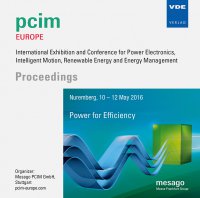Converter Switching Noise Reduction for Enhancing EMC Performance in HEV and EV
Konferenz: PCIM Europe 2016 - International Exhibition and Conference for Power Electronics, Intelligent Motion, Renewable Energy and Energy Management
10.05.2016 - 12.05.2016 in Nürnberg, Deutschland
Tagungsband: PCIM Europe 2016
Seiten: 8Sprache: EnglischTyp: PDF
Persönliche VDE-Mitglieder erhalten auf diesen Artikel 10% Rabatt
Autoren:
Chun, HoTae; Han, SeungHyun; Jun, ChangHan,; Lee, JeongYun; Lee, JaeWon,; Jeong, JeeHye,; Joo, JeongHong,; Jung, JinHwan, (Hyundai Motor Company, Korea)
Inhalt:
In Eco-Friendly Vehicle like Hybrid Electric Vehicle (HEV) and Electric Vehicle (EV), the electric power conversion system performs the electric motor operating and 12V power supply, using the high voltage battery. The LDC, Low-Voltage DC-DC Converter, is the DCDC Converter converting high voltage (usually 200~400V) to low voltage (usually 12~15V). In order to maximize the efficiency, the SMPS method is used for LDC. The SMPS includes the PWM switching which generates the severe EMC noise in the form of switching noise. This is because DC-DC Converter in HEV and EV is operated using the High-Voltage and High- Frequency. Since the power semiconductor device like FET has the nonlinear property, this intensive noise is expanded into harmonics of switching frequency. This switching noise harmonics contains the huge energy in particular frequency so it may create serious EMC problem in HEV and EV. The RFI, radio frequency interference, is the test method by which we can measure the switching noise in the vehicle level. The RFI test measures the amount of EMC noise interference from the electric device to the radio antenna. Since the general switching frequency of LDC is about 100kHz, the AM (510kHz~1.8MHz) is the closest band to the switching noise harmonics. As a result, the switching noise from LDC appears strongly in AM RFI test. Therefore, reducing the switching noise is important feature for the robust design in terms of EMC performance. In this paper, several solutions of switching noise reduction of LDC output is suggested. The solutions include the noise path improvements and noise source reduction. In addition to that, the simulation and experiment are performed for each solution as well. Finally, the best effective way of switching noise reduction is proposed through the comparison analysis.


